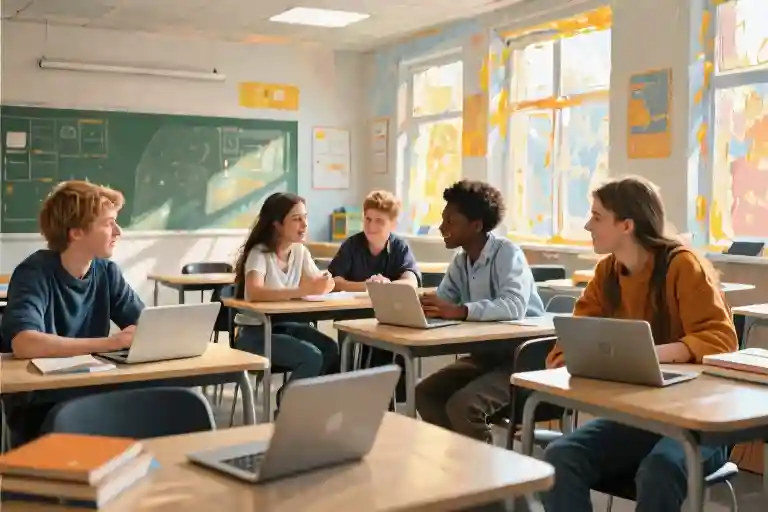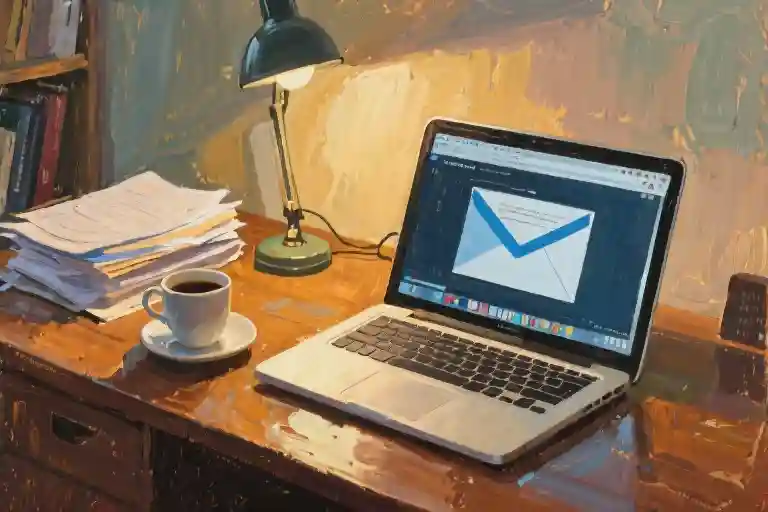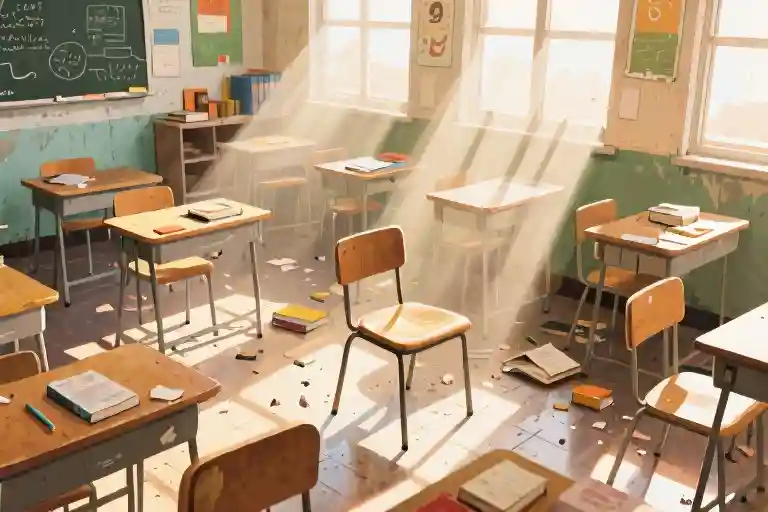The most perplexing graduates aren’t those who struggle academically, but those who ace exams yet falter when faced with real-world decisions. We’ve all encountered them – individuals with impressive credentials who uncritically accept misinformation or freeze when confronting novel problems. This paradox reveals the fragile link between formal education and the ability to think independently.
At its core, education represents society’s systematic transfer of knowledge – facts, theories, and skills accumulated over generations. Independent thinking, conversely, is the cognitive muscle that allows individuals to interrogate that knowledge, discern patterns, and forge original connections. One provides the raw materials; the other determines what we build with them.
The relationship between these two forces shapes more than academic success. It determines how we navigate career pivots, process conflicting health advice, or participate in civic life. When education nurtures independent thinking, it creates lifelong learners who adapt to change. When it doesn’t, we risk producing walking databases – full of information but lacking the tools to use it wisely.
Consider medical education’s evolution. For decades, doctors memorized anatomical facts and treatment protocols. Today’s programs emphasize diagnostic reasoning – teaching students to weigh probabilities, challenge assumptions, and tolerate uncertainty. This shift acknowledges that in our rapidly changing world, the ability to think independently isn’t just supplementary; it’s survival skills for the mind.
Yet the tension persists. Standardized testing often rewards quick recall over deep analysis. Lecture-heavy formats can condition passive reception of ideas. Even well-intentioned educators sometimes conflate compliance with learning. The students who ask uncomfortable questions or propose unconventional solutions may receive lower marks than those who dutifully reproduce expected answers.
This isn’t an indictment of education, but a call to recognize its higher purpose. True education shouldn’t just fill minds; it should ignite them. The chemist who questions lab safety protocols after spotting overlooked risks demonstrates this ideal – her knowledge informs her thinking, and her thinking improves the application of that knowledge.
As artificial intelligence reshapes what information matters and how we access it, this interplay grows more crucial. When algorithms can summarize centuries of philosophy in seconds, what becomes valuable isn’t the retention of philosophical concepts, but the capacity to evaluate their merit and relevance. The next generation won’t be measured by what they know, but by how they think.
The most transformative classrooms aren’t those with the highest test scores, but those where students learn to interrogate the questions themselves. Where a history lesson becomes an exercise in evaluating biased accounts, and math problems train pattern recognition beyond prescribed formulas. This is education as mental cross-training – developing cognitive flexibility alongside content mastery.
We stand at an inflection point where educational institutions must choose whether to be museums of past knowledge or laboratories for future thinkers. The choice will determine not just individual potential, but our collective capacity to solve complex global challenges. After all, the problems we face today weren’t created by independent thinkers – but solving them will require nothing less.
The Dynamic Relationship Between Education and Independent Thinking
The most common misconception about education is that it’s merely a transfer of information from teacher to student. This one-way model, where knowledge flows like water from a faucet into an empty vessel, fails to account for what actually happens in meaningful learning experiences. Real education isn’t about passive absorption—it’s an active dance between acquiring knowledge and developing the capacity to think for oneself.
Traditional education systems often operate on this linear assumption: teach facts first, critical thinking later. The problem becomes evident when we meet graduates who can recite textbook passages but struggle to form original opinions about current events. Their education provided information without cultivating the tools to process it independently. This gap explains why some highly educated individuals still fall for misinformation or fail to adapt to new challenges.
The alternative is understanding education and independent thinking as mutually reinforcing elements in a continuous cycle. Quality education provides the raw materials—facts, concepts, and methods—while independent thinking transforms these materials into personal understanding and practical applications. In turn, this processed knowledge informs further educational pursuits, creating an upward spiral of intellectual growth.
Psychological research supports this bidirectional model. A University of Chicago study observed two groups of students learning scientific concepts. The first group received traditional lectures, while the second engaged in structured questioning sessions where they had to challenge and defend ideas. When tested months later, the questioning group retained 35% more information and demonstrated superior ability to apply concepts to novel problems. Their education had equipped them not just with knowledge, but with the thinking skills to use it.
This interplay manifests in three observable ways:
- Foundation Building: Education supplies the vocabulary and frameworks that make independent analysis possible. One can’t critically evaluate economic theories without first understanding basic principles.
- Skill Development: Through guided practice—like Socratic seminars or open-ended projects—education trains the mental muscles of evaluation, synthesis, and creation.
- Confidence Cultivation: As students experience success in independent reasoning, they develop the intellectual courage to tackle increasingly complex challenges.
The implications are profound. Schools that prioritize this symbiotic relationship produce learners who don’t just know things—they know how to know. These individuals approach new information with healthy skepticism and creative potential, recognizing that education isn’t about collecting answers but refining the questions. They understand that facts may become obsolete, but the ability to think independently remains their most durable asset.
What makes this model particularly relevant today is its resilience in the face of information overload. In an era where facts are instantly accessible but context is scarce, the premium shifts from memorization to discernment. The students who thrive will be those whose education taught them not what to think, but how to think—and more importantly, how to keep thinking when the textbook doesn’t have the answers.
The Educator’s Playbook: Cultivating Independent Minds
The most profound moments in education often happen when a student’s eyes light up with that ‘aha’ look – not because they’ve memorized the right answer, but because they’ve discovered how to think through a problem. This is where true learning begins to take root. For educators aiming to nurture independent thinking, the classroom becomes both a laboratory and a playground for cognitive development.
Seven Principles for Thoughtful Classrooms
1. The Right to Be Wrong Principle
Creating an environment where incorrect answers are treated as valuable stepping stones rather than failures. A physics teacher might celebrate a student’s miscalculation of projectile motion: “Your approach contained three brilliant insights before the slip – let’s isolate those.”
2. Question Storming
Unlike brainstorming answers, this technique has students generate only questions about a topic. A history class studying the French Revolution might produce: “Why did the peasants trust the bourgeoisie?” “How might Louis XVI have avoided the guillotine?” The process values inquiry over conclusions.
3. The Disruptive Primary Source
Before teaching standard interpretations, expose students to raw materials. Literature students encountering Shakespeare might first analyze the First Folio’s original punctuation before modern editors’ interpretations.
4. Cognitive Apprenticeship
Make thinking visible. A chemistry teacher might work through an unfamiliar problem aloud, verbalizing their reasoning: “I’m noticing the reaction rate doesn’t match the expected… perhaps the temperature…”
5. The Perspective Switch
Regularly shift analytical lenses. An economics case study could be examined through Marxist, Keynesian, and behavioral psychology frameworks in succession.
6. Structured Controversy
Assign students to argue positions they personally disagree with. Debating “colonialism benefited developing nations” forces engagement with uncomfortable evidence.
7. The Empty Syllabus
Leave 20% of course content for student co-creation. A biology class might vote to deep-dive into CRISPR ethics after covering genetics basics.
Measuring What Matters
The Critical Thinking Growth Matrix tracks development across four dimensions:
- Question Quality – From factual (“When did WWII end?”) to conceptual (“How do we define ‘ending’ for global conflicts?”)
- Assumption Awareness – Identifying implicit biases in sources and personal thinking
- Perspective Flexibility – Ability to synthesize opposing viewpoints
- Metacognition – Monitoring and adjusting one’s own thinking processes
Teachers can use simple rubrics for each dimension, providing students with clear developmental milestones rather than letter grades.
When Structure Strangles Thought
The cautionary tale of Ms. Thompson’s literature class demonstrates how good intentions can backfire. Her meticulously planned 55-minute sessions included:
- 5 min: Journal prompt
- 10 min: Guided discussion
- 15 min: Group activity
- 10 min: Presentation
- 5 min: Reflection
While organized, this left no room for spontaneous exploration when students became fascinated by an unplanned theme. The breakthrough came when she replaced two weekly sessions with “Thinking Time” – open periods where students directed inquiry based on current interests.
Independent thinking isn’t about abandoning structure, but about creating frameworks flexible enough for authentic intellectual exploration. As one reformed teacher noted: “I stopped being the gatekeeper of knowledge and became a fellow traveler in discovery.”
Developing Independent Thinking as a Learner
The classroom environment can only take us so far in cultivating independent thought. True intellectual autonomy emerges when we take personal responsibility for shaping our cognitive processes. This section explores practical strategies for learners to develop critical thinking skills beyond formal education settings, focusing on three transformative techniques: the three-color note-taking method, reverse debate training, and a self-assessment framework.
Three-Color Note-Taking: A System for Active Engagement
Traditional note-taking often becomes an exercise in passive transcription. The three-color method disrupts this pattern by forcing continuous interaction with material. Here’s how it works:
- Blue ink records factual information exactly as presented (lecture points, textbook quotes)
- Red ink documents your immediate reactions (questions, contradictions, personal connections)
- Green ink synthesizes both into original insights (patterns, alternative interpretations)
This approach mirrors the cognitive journey from comprehension to analysis to creation. A biology student might use blue for “mitochondria are the powerhouse of the cell,” red for “but why don’t neurons have more mitochondria despite high energy needs?” and green for “perhaps different energy management strategies evolved in neural vs muscle tissues.”
Reverse Debate: Strengthening Mental Flexibility
We naturally defend positions we agree with. Reverse debate trains us to articulate opposing viewpoints with equal vigor:
- Choose a controversial topic in your field
- Research arguments for your instinctive position
- Then spend equal time developing the strongest possible case for the opposite view
- Finally, write a synthesis acknowledging strengths in both perspectives
When engineering students debate “renewable vs nuclear energy,” those predisposed to renewables must argue for nuclear’s reliability and energy density. This builds intellectual humility – recognizing good arguments exist beyond our initial biases.
Self-Assessment: Mapping Your Thinking Journey
Independent thinking flourishes with honest self-reflection. Use this monthly checklist to track progress:
Critical Thinking Indicators
- Identified underlying assumptions in 3+ arguments
- Changed a position based on new evidence
- Created an original analogy to explain a complex concept
- Caught myself in confirmation bias (with specific example)
- Asked a question that stumped an expert
Create a “thinking portfolio” collecting examples of your evolving thought processes – perhaps the first draft of an argument compared to its refined version after considering counterpoints. Over time, these artifacts reveal your cognitive maturation more accurately than test scores.
Implementing the Strategies
Start small to avoid overwhelm. In week one, apply three-color notes to just one course. Week two, attempt a mini reverse debate on a current events topic. By month three, you’ll notice subtle shifts – catching flawed reasoning in advertisements, probing professors with sharper questions, or recognizing when your initial reaction to new information might be simplistic.
The most powerful benefit emerges gradually: the ability to learn anything deeply because you’ve mastered how to think, not just what to think. As your self-assessment portfolio grows, you’ll see concrete evidence of your mind becoming more nimble, more curious, and ultimately more free.
Nurturing Independent Thinkers at Home
Parents often wonder how to transform everyday interactions into opportunities for developing their child’s independent thinking. The kitchen table conversations, weekend errands, and even disputes over screen time hold hidden potential – if we know how to structure them differently.
The Three-Phase Approach
Phase 1: Foundation Building (Ages 4-8)
Start with simple cognitive exercises disguised as games. When reading bedtime stories, pause before turning the page and ask: “What might happen next?” The goal isn’t predicting the actual plot but valuing the child’s reasoning process. Collect leaves during walks and sort them using changing criteria – first by color, then by shape, then by imaginary categories (“which ones would fairies use as umbrellas?”).
Phase 2: Constructive Challenge (Ages 9-13)
Introduce friendly intellectual friction. During family movie nights, assign opposing viewpoints to debate afterward (“You argue why the villain was right, I’ll explain why they were wrong”). Create a “Question Jar” where everyone deposits curious inquiries about daily observations (“Why do shadows change length?”), then research answers together while evaluating source reliability.
Phase 3: Creative Application (Teenage Years)
Transform household decisions into case studies. Planning a vacation? Have your teen research destinations while considering budget constraints, family interests, and logistical trade-offs. When appliances break down, brainstorm repair solutions before calling professionals. These real-world exercises develop what psychologists call “cognitive flexibility” – the ability to adapt thinking to new situations.
The Language of Independent Thinking
Conversational patterns make invisible impacts. Compare these common exchanges:
| Closed Approach | Open Alternative |
|---|---|
| “What’s the capital of France?” (Tests rote memory) | “How might Paris be different if it weren’t the capital?” (Invites analysis) |
| “That’s not how math works” (Shuts down exploration) | “Interesting approach – what made you solve it this way?” (Values process) |
| “Because I said so” (Appeals to authority) | “Let’s think through the possible outcomes together” (Develops judgment) |
The magic happens in follow-up questions. After a child shares an opinion, try:
- “What experiences led you to that conclusion?”
- “How might someone with different experiences see this?”
- “If we tested this idea, what would success look like?”
Project-Based Learning at Home
Family projects build thinking stamina better than isolated exercises. Try these adaptable frameworks:
The 3-Week Curiosity Project
- Week 1: Identify something puzzling in daily life (Why do some grocery items have more packaging?)
- Week 2: Gather information through observation, interviews, and controlled experiments
- Week 3: Present findings to the family “board” with supporting evidence
The Reverse Birthday Party
Instead of receiving gifts, have your child:
- Research a local community issue
- Design an awareness campaign
- Convert would-be gift money into targeted donations
- Evaluate the initiative’s impact afterward
These experiences teach that thinking isn’t just an academic exercise – it’s a tool for shaping reality. The kitchen becomes a lab, the backyard a research center, and ordinary moments transform into cognitive gymnasiums where young minds build strength through joyful exertion.
The Balancing Act: Standardized Tests and AI in Independent Thinking
The tension between measurable outcomes and cognitive development has never been more pronounced. Standardized testing, that longstanding pillar of educational assessment, now finds itself at a crossroads where traditional metrics collide with our growing understanding of how independent thinking flourishes.
The Case for Reform
Proponents of overhauling standardized exams argue these tests inherently privilege rote memorization over critical analysis. When students spend months drilling test-taking strategies rather than engaging with material through questioning and synthesis, we create what education researcher Linda Darling-Hammond calls ‘surface swimmers’ – individuals adept at navigating shallow waters but unprepared for deeper intellectual dives. Recent studies from the National Education Association reveal that 73% of teachers modify their instruction to ‘teach to the test,’ often at the expense of open-ended discussions that foster independent thought.
Singapore’s gradual shift away from high-stakes exams offers compelling evidence. By replacing year-end standardized tests with ongoing qualitative assessments, educators reported a 28% increase in students’ willingness to challenge textbook assumptions. The Ministry of Education found that project-based evaluations better predicted university success than previous exam scores.
The Retention Argument
Yet defenders of standardized testing present valid concerns. Psychometricians like James Popham maintain that carefully designed exams can indeed measure higher-order thinking skills. The revised SAT’s ‘Analysis in History/Social Studies’ section, for instance, requires students to evaluate evidence and construct arguments – core components of independent thought. In resource-limited districts, standardized tests provide an objective (if imperfect) benchmark for educational equity.
Perhaps the most nuanced perspective comes from classroom teachers themselves. Ms. Rodriguez, a 15-year veteran in a Title I school, shares: ‘My students need both – the test strategies that open doors to college, and the thinking skills that’ll help them walk through those doors prepared. We do Socratic seminars on Tuesdays, test prep on Thursdays.’ This pragmatic duality highlights education’s ongoing negotiation between ideal outcomes and institutional realities.
When Algorithms Meet Autonomy
The rise of generative AI tools like ChatGPT introduces fresh complexities. Initially feared as ‘thinking substitutes,’ these technologies are revealing unexpected opportunities to strengthen independent cognition when used intentionally:
- The Mirror Effect: Students comparing their original work with AI-generated responses often spot gaps in their own reasoning, creating natural moments for metacognition.
- Collaborative Debate: Tools like Khanmigo now position AI as a debate partner that challenges assumptions rather than providing answers.
- Process Visualization: Watching an AI deconstruct a problem step-by-step can model thinking patterns that students then adapt and critique.
However, the shadow side remains. Stanford researchers found that students using AI for initial brainstorming produced 19% more creative solutions – but those relying on it for final outputs showed decreased retention. The key distinction emerges between using technology as a launchpad versus a crutch.
Navigating the New Landscape
Three principles are proving essential for maintaining independent thinking in this evolving environment:
- Transparent Process: Require students to document their pre-AI thinking before consulting tools
- Purposeful Limitations: Design assignments where AI can only assist with discrete components
- Critical Comparison: Have learners analyze differences between their work and machine output
As educational psychologist Angela Duckworth notes, ‘The measure of success isn’t whether students can outperform algorithms, but whether they’ve developed the discernment to know when – and how – to engage with them.’ This balanced approach acknowledges technology’s role while centering human cognition’s irreplaceable value.
The path forward won’t involve choosing between foundational knowledge and independent thinking, or between analog and digital tools. It requires the educational equivalent of jazz improvisation – mastering the fundamentals so thoroughly that creative deviation becomes second nature. In our classrooms and living rooms, we’re all learning to conduct that delicate orchestra.
Closing Thoughts: Where Education Meets Independent Thinking
We’ve traveled through the intricate dance between education and independent thinking—how they fuel each other in a continuous cycle of growth. Now it’s time to put these ideas into motion.
Your 21-Day Thinking Challenge awaits—a free curated plan with daily exercises blending Socratic questioning techniques with modern metacognition strategies. Download it today and notice how small shifts in your learning approach can reveal new dimensions in familiar subjects. The first seven days focus on awareness, the next seven on application, and the final week on creating your own thinking frameworks.
John Dewey once observed that ‘education is not preparation for life; education is life itself.’ This perspective transforms how we view classrooms, dinner table conversations, and even solitary study sessions. When education nurtures independent thinking, it stops being something we receive and becomes something we actively do—a lifelong practice as natural as breathing.
Now we’d love to hear your story: When did you first experience the spark of independent thought within formal education? Was it a teacher’s provocative question? A textbook contradiction you couldn’t ignore? Share your moment in the comments—your experience might light the way for others navigating this essential journey.





